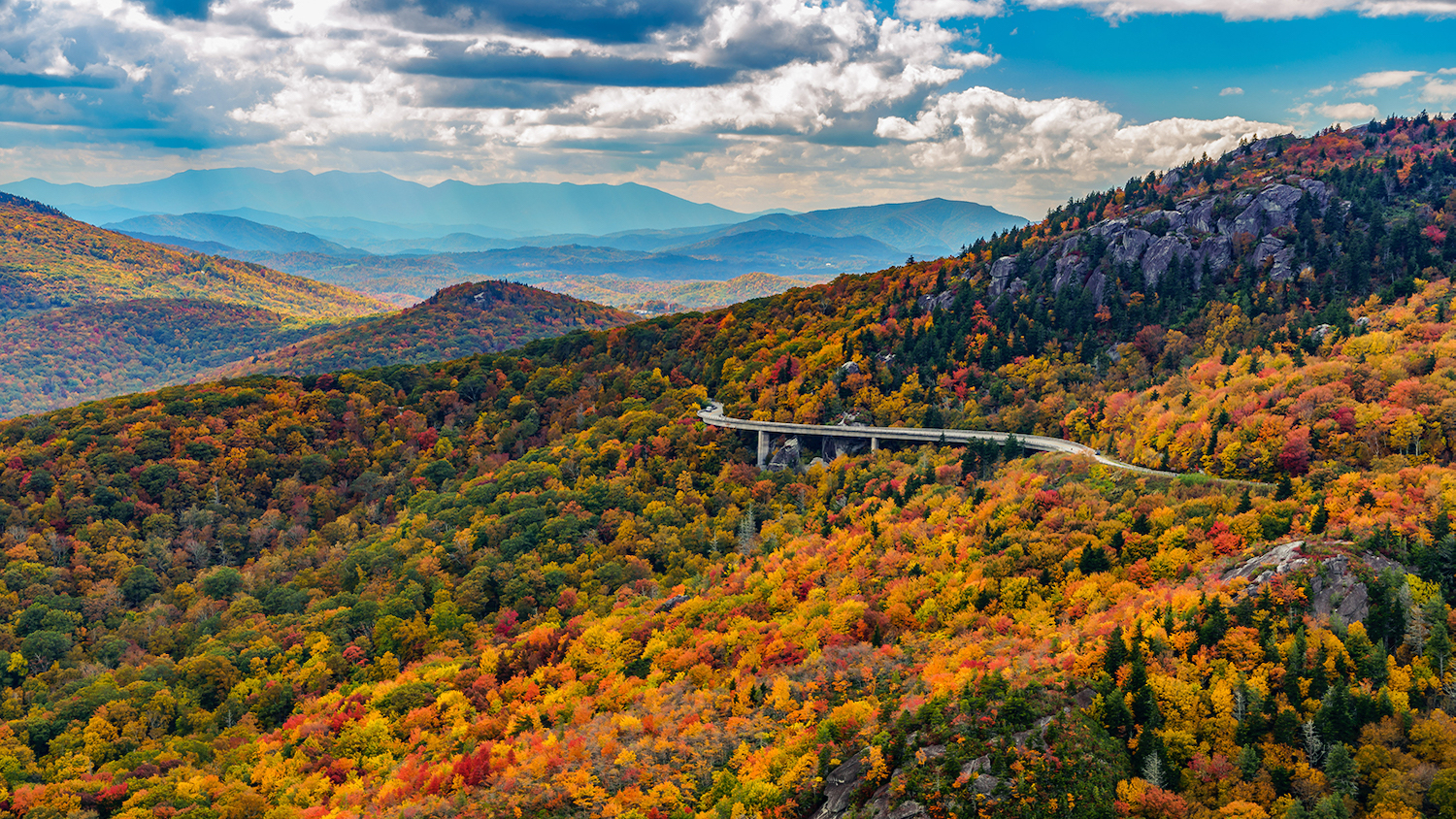North Carolina’s Fall Foliage: Will It Be A Disappointing Year?

Every autumn, millions of people visit North Carolina to view the leaves as they change color from green into a mixture of red, purple, yellow and orange. But this year’s fall foliage might not live up to expectation as warm, dry conditions persist across the state, according to an expert at NC State.
“I’m not confident in saying we’re going to have an above-average year for fall foliage,” said Robert Bardon, a professor of forestry and environmental resources and associate dean for extension at the College of Natural Resources.
Bardon added that the duration and vibrancy of fall foliage is mostly dependent on the weather between September and October, with the optimal conditions being sunny days and cooler nights.
The lower temperatures and shorter days associated with winter cause trees to stop producing chlorophyll — the chemical that produces the green color in plants and helps them make energy from sunlight.
As the chlorophyll degrades, two other types of pigments appear from within the leaves. That includes carotenoids, which produce the yellow and orange colors, and anthocyanins, which produce the red and purple colors.
Unfortunately, North Carolina has experienced above-average temperatures throughout the summer, and if the heat persists in the weeks leading up to autumn, it could delay the onset of color production, according to Bardon.
The Climate Prediction Center’s outlook for September through November shows that the Southeast and other regions across the country will likely continue to experience above-average temperatures in the coming months.
Additionally, more than a dozen counties across North Carolina continue to experience “abnormally dry” conditions due to the above-average temperatures and a lack of rainfall, which could cause many trees, especially shallow-rooted species like birches and poplars, to lose their leaves early.
Some trees can tolerate drier conditions and hold onto their leaves until autumn, according to Bardon. But the leaves that do change typically fall off prematurely and appear in more muted colors than normal.
“The most vibrant foliage appears when there’s a warm, dry summer followed by early autumn rains,” he said. “Anytime there’s a disruption in that pattern, there can be an impact to the color of the leaves.”
Bardon added that North Carolinians living in areas of drought could still see a vibrant fall this year if moderate rainfall occurs in the coming weeks. However, if tropical storms continue to occur, the heavy, sustained rainfall and high winds could knock leaves off of the trees.
According to the Farmers’ Almanac, fall foliage will peak across the inland regions of North Carolina between October 12 and 28. Meanwhile, along the coast, foliage is expected to peak between October 19 and November 4.
“North Carolina is such a big state, and the weather can be significantly different from the mountains to the coast,” Bardon said. “So no matter what happens, there will always be somewhere you can see fall colors.”
Though millions of people visit the Blue Ridge Parkway and the Great Smoky Mountains National Park every autumn for leaf-peeping, Bardon added that “there are just as many viewing opportunities in other parts of North Carolina,” noting that county and state parks across the Piedmont and Coastal regions provide opportunities for viewing fall foliage that don’t require extensive travel.
- Categories: